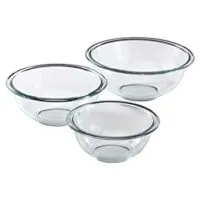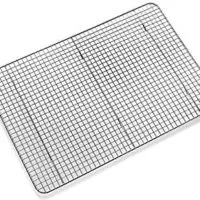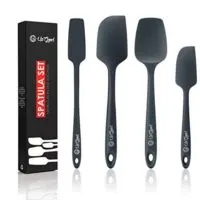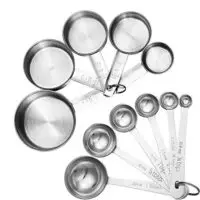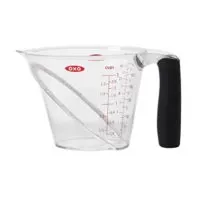This gluten free dairy free pumpkin pie is a perfect dessert for thanksgiving and all year-round!
This filling is every bit as good as my regular dairy free pumpkin pie and is absolutely delicious and will impress everyone who tastes it.
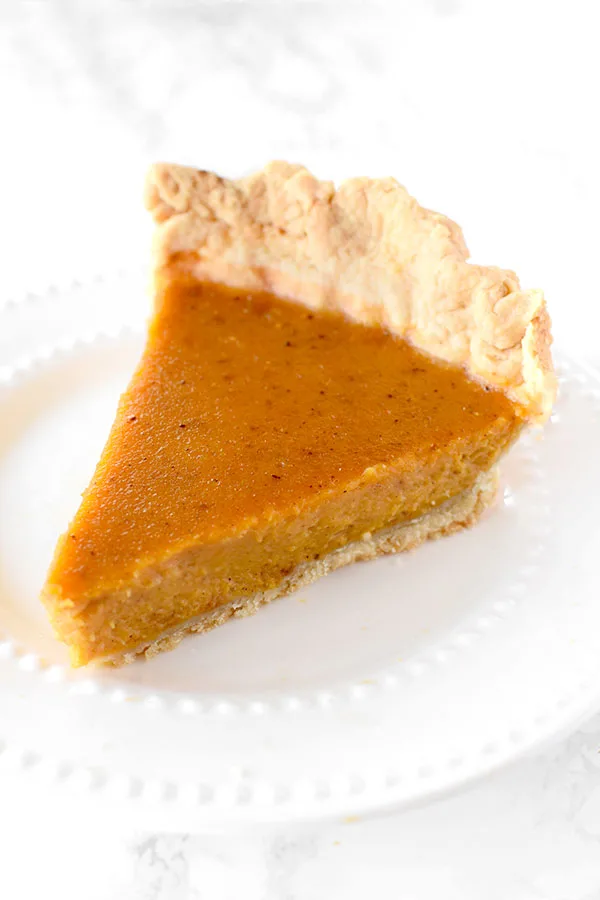
If you like this gluten free dairy free pumpkin pie, you may also like my gluten free dairy free green bean casserole and my gluten free dairy free cornbread.
History of Pumpkin Pie
The pumpkin is native to North America and was served at the first Thanksgiving.
It was an early export from the New World to Europe and pumpkin pie recipes could be found in seventeenth century English cookbooks.
Pumpkin pies made by early American colonists were very different than what we know today as pumpkin pie.
Their “pies” were actually savory soups made and served in a pumpkin rather than a sweet custard in a crust.
It was not until the early 1800s that the recipes appeared in American cookbooks and that pumpkin pie became a common addition to the Thanksgiving dinner.
At the same time in England, pumpkin “pies” were prepared by stuffing the pumpkin with apples, spices, and sugar, and then baking it whole.
Why Do We Eat Pumpkin Pie on Thanksgiving?
This is actually due to the same incredible woman who is behind our celebrating Thanksgiving altogether: Sarah Josepha Hale.
Hale was a prominent writer and editor.
She wrote the children’s poem Mary Had a Little Lamb, helped found the American Ladies’ Magazine – which she used as a platform to promote women’s issues – and was the editor for Godey’s Ladys’ Book for more than 40 years, turning it into one of the most influential periodicals in the country.
While at Godey’s, Hale often wrote editorials and articles about the holidays, including Thanksgiving, despite it not being a holiday yet.
She believed that if Thanksgiving was passed as a federal holiday, it would help ease growing tensions and divisions between the North and South at the time.
Hale advocated for the national holiday for 17 years before it was successful. She wrote presidents Taylor, Fillmore, Pierce, and Buchanan who all ignored her.
However, this didn’t stop her. She published recipes for the holiday in her magazine so women would know what to make for it. Among these recipes was pumpkin pie!
It was finally President Lincoln who listened, though he planned on declaring the holiday in April.
Hale wrote again, and within a week, Thanksgiving declared to be on the final Thursday in November.
He hoped, as Hale did, that it would help “heal the wounds of the nation.”
Thanksgiving was declared a national holiday by President Abraham Lincoln halfway through the civil war.
However, since pumpkins were native to the North, southern states had no tradition of eating pumpkin pie, and sothey saw it as a symbol of Yankee culture imposed on them.
So, they made sweet potato pie instead. This tradition still holds in the South today, just as pumpkin pie does in the North.
The Filling
The hardest part of making a pumpkin pie is the custard filling.
A custard is defined as a “milk or cream cooked with egg yolk to thicken it” and it can be a little tricky to make.
If you’ve ever tried to make pumpkin pie before, you may have gotten cracks on top or served it fallen and maybe even a little wet.
What makes pumpkin pie watery on top?
Pumpkin pie becomes watery on top if the custard is too thin, which causes the liquid to gather on top. To avoid this, I add a little bit of corn or potato starch.
What makes pumpkin pie fall?
Pumpkin pie usually falls because it rises too high when baking, due to the higher temperature. Then as it cools, it falls.
You can prevent this by baking it on a lower temperature. It stays more even and won’t fall.
What makes pumpkin pie crack on top?
Pumpkin pie cracks on top are due to over-baking or baking too close to the heat source.
To avoid this, bake on the middle rack and turn off the heat as soon as the pie has set in the middle.
Dairy Free Pumpkin Pie
As mentioned above, a custard requires milk or cream.
Usually pumpkin pie calls for evaporated milk. Clearly, this is not possible when making a dairy free pumpkin pie.
If you do not want to use coconut milk you can use a dairy free whipping cream.
My Mom made her pumpkin pie dairy free this way long before I heard of coconut milk. However, since dairy free whipping cream is sweetened, cut the sugar by half a cup.
This recipe calls for unsweetened milk because evaporated milk is unsweetened, as opposed to sweetened condensed milk.
However, it also calls for more sugar than most recipes (1 and ½ cup rather than ¾ cup) because I think the pie tastes much better a little sweeter.
If you use sweetened coconut milk, you should probably also cut the sugar by half a cup.
Does this pumpkin pie taste like coconut?
Nope. There isn’t even a hint of coconut flavor in this pie.
Blind Baking The Crust
Blind baking is a technique used to help prevent the crust from becoming soggy and has a crisp texture.
How to Blind Bake a crust
- Cover the crust in the pie pan with baking paper or tin foil
- Fill it with pie weights, sugar, beans, or pennies and bake at 375°F or 190°C for 30 minutes
- Remove the filling and bake for another 10 minutes to brown the bottom
Sugar
The primary role of sugar is to be a sweetener. However, sugar also contributes to the tenderness and moistness of the baked good by absorbing and retaining moisture and helps create the golden brown color when baking as it caramelizes.
Recipes with more sugar often result in softer, moister textures. However, I learned the hard way that too much sugar leads to a sticky mess.
When it’s heated, sugar caramelizes, resulting in a rich, complex flavor and a brown color. This adds both flavor and color to baked goods and is also the process in which caramel sauce, dulce de leche, caramel candies, and regular candies are made.
When used in recipes containing yeast, the sugar is eaten by the yeast, producing carbon dioxide and causing the dough to rise.
Sugar also acts as a preservative in jams, jellies, and fruit preserves by reducing water activity and preventing microbial growth.
There are many different types of sugar, including white sugar, brown sugar, vanilla sugar, powdered sugar, turbinado sugar, and demerara sugar.
When a recipe calls for “sugar” without specifying anything else, it’s referring to regular white sugar.
White Sugar
White sugar (sometimes called granulated sugar, table sugar, or white granulated sugar) is made of either beet sugar or cane sugar, which has undergone a refining process.
It is the easiest to find and most commonly used.
Brown Sugar
Brown sugar is white sugar with molasses added to it.
It is commonly used in chocolate chip cookie recipes, and it’s rare for a recipe that calls for brown sugar not to also call for white sugar as well.
When a recipe calls for “brown sugar” but doesn’t specify what type (light or dark), it is referring to light brown sugar.
In my recipes, you can use whatever type of brown sugar you have on hand, whether it is dark brown sugar, light brown sugar, or demerara sugar – which is very common in Israel.
Just keep in mind that the flavor and color will be slightly different, depending on what you choose to use.
Turbinado Sugar
Turbinado sugar is better known as “raw sugar.” But, despite this name, the sugar is not really “raw.”
Instead, it’s partially refined sugar that retains some of the original molasses.
The term “raw sugar” may also give off the impression that it is somehow healthier.
In reality, turbinado sugar is nutritionally similar to white sugar.
Demerara Sugar
Demerara sugar is very popular in Israel and is especially delicious in tea, but is also used for baking.
Unlike white sugar, demerara sugar undergoes minimal processing and retains some vitamins and minerals.
However, it is still not much healthier than white sugar.
Vanilla Sugar
Vanilla sugar is not very common in the States. However, it is common in Israel and parts of Europe.
This is sugar that sat for an extended period of time with vanilla beans, giving it a vanilla flavor.
Caster Sugar
This type of sugar is common in the United Kingdom.
It has a grain finer than white (granulated) sugar and larger than powdered sugar.
Caster sugar is often called for in recipes for delicate baked goods like meringues, souffles, and sponge cakes.
You can use a 1:1 conversion rate between caster sugar and white (granulated) sugar.
Powdered sugar
Powdered sugar, sometimes known as confectioners’ sugar, is a sugar with a powdered texture.
This sugar is rarely used for baking. Instead, it is used for dusting desserts and making frosting, icing, and glazes.
In some countries, you can also find powdered vanilla sugar.
It is made the exact same way regular vanilla sugar is made. However, the sugar used is powdered instead of granulated.
Vanilla Extract vs Vanilla sugar
In my recipes, I don’t specify what kind of vanilla to use.
The reason for this is that in the States, vanilla extract is exclusively used.
Meanwhile in Israel, along with many European countries, vanilla sugar is common.
In most, if not all recipes, both vanilla extract and vanilla sugar can be used.
In recipes where vanilla sugar can be used instead of extract, you can replace them 1:1.
Replacing Sugar with Honey
If you’d prefer to use honey instead of sugar, you can do so with pretty good results.
Honey can be two or even three times as sweet depending on the honey, so for every 1 cup of sugar, you can use 1/2 to 2/3 cup honey.
Since honey adds liquid, you need to remove some to balance it out. For every cup of honey, remove a 1/4 cup of liquid.
Also, it burns faster than granulated sugar, so you want to lower the baking temperature by 25 F. In addition, check it early and often to avoid burning or overbaking.
How to Store Sugar
Sugar should be stored in an airtight container to prevent clumping and moisture absorption, and kept in a cool, dry place.
DO EGGS NEED TO BE AT ROOM TEMPERATURE?
The short answer is “no.” While a side-by-side comparison shows that baking with eggs at room temperature makes a better crumb, it’s not otherwise noticeable.
What are Eggs used for?
Eggs do three things in most recipes: they help bind the ingredients together, act as a mild leavening agent, and they add moisture.
ARE EGGS DAIRY?
No, eggs are not dairy. Dairy is milk and any food products made from milk, including cheese, cream, butter, and yogurt.
So, while eggs are an animal product, they are not dairy. In fact, eggs fall under the protein food group.
How to tell if your eggs are still good
Fill a glass with cool water and submerge the eggs.
If the eggs sink to the bottom and lay flat on their side, they’re still fresh.
If they sink, but stand on one end at the bottom of the glass, the eggs are not as fresh but still good.
An egg that floats to the top is likely spoiled.
EGGLESS OPTION
Eggs can be substituted with 1/4 cup of unsweetened apple sauce per egg. This means that for recipes calling for 2 eggs, you’d need 1/2 cup of unsweetened apple sauce.
The reason applesauce makes a good binder is that it’s high in pectin. Pectin is a naturally occurring starch in fruits and berries that acts as a thickening agent and stabilizer in food.
This happens when combined with sugar and acid (if the fruit or berry isn’t naturally acidic).
Just keep in mind that it may change the flavor slightly.
Making Ahead of Time
The filling can be made a day in advance. In fact, doing so allows the flavor of the spices to develop.
Freshly baked pumpkin pie will keep for about 3 to 4 days if covered and refrigerated.
Can Pumpkin Pie Be Stored at room temperature?
No. It has a custard filling, so it needs to be refrigerated.
HOW TO STORE
Let cool to room temperature. Cover loosely with plastic wrap or foil. Refrigerate for up to 3 to 4 days.
How to Freeze
Let cool to room temperature. Wrap in plastic wrap until tightly sealed. Then wrap in a layer of aluminum foil.
If you do not have plastic wrap and aluminum foil, place it in a resealable freezer bag.
Place on a level freezer shelf and freeze for up to 1 to 2 months. After this, the pie is still safe to eat but the quality begins to degrade.
Defrost
When you are ready to defrost the pie, transfer it to the refrigerator. Let thaw for at least 12 hours.
Gluten Free Dairy Free Pumpkin Pie
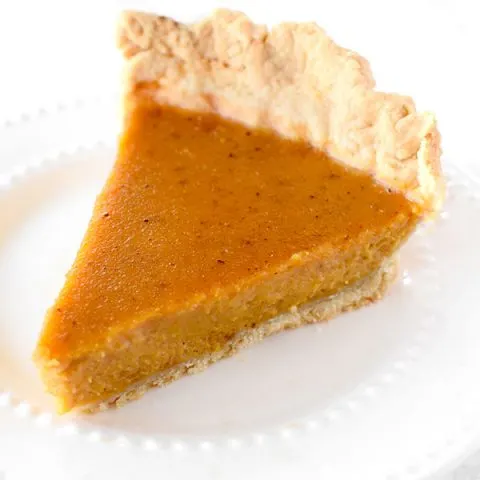
This dairy free gluten free pumpkin pie is delicious and perfect not only for Thanksgiving, but also year-round.
Ingredients
- 15 ounce canned pumpkin puree*
- 12 ounce of full fat unsweetened coconut milk
- 2 large eggs
- 1 1/4 cup white sugar
- 1 teaspoon ground cinnamon
- 1/2 teaspoon salt
- 1/2 teaspoon ground ginger
- 1/4 teaspoon ground cloves
- 1 unbaked gluten free dairy free 9-inch deep-dish pie crust
Instructions
- Preheat your oven to 325°F or 160°C.
- In a medium or large mixing bowl, add pumpkin filling, coconut milk, eggs, sugar, cinnamon, salt, ginger, and cloves. Whisk together by hand until well combined.
- Using a baking spatula, pour the filling into a pie shell. Bake on the middle rack for 50 to 55 minutes or until the center has set.
- Cool on a wire rack until it reaches room temperature (about two hours). Refrigerate for 2 hours or overnight.
Notes
*If you'd rather not use canned pumpkin, you can use homemade butternut squash puree and it will taste exactly the same and even have a little prettier of a color.
Recommended Products
Some of the links below are affiliate links, which means that if you choose to make a purchase, I will earn a small commission. This commission comes at no additional cost to you.
Nutrition Information:
Yield:
8Serving Size:
1Amount Per Serving: Calories: 147Total Fat: 4gSaturated Fat: 2gTrans Fat: 0gUnsaturated Fat: 2gCholesterol: 47mgSodium: 188mgCarbohydrates: 25gFiber: 3gSugar: 11gProtein: 4g
Calorie count does not include the crust

